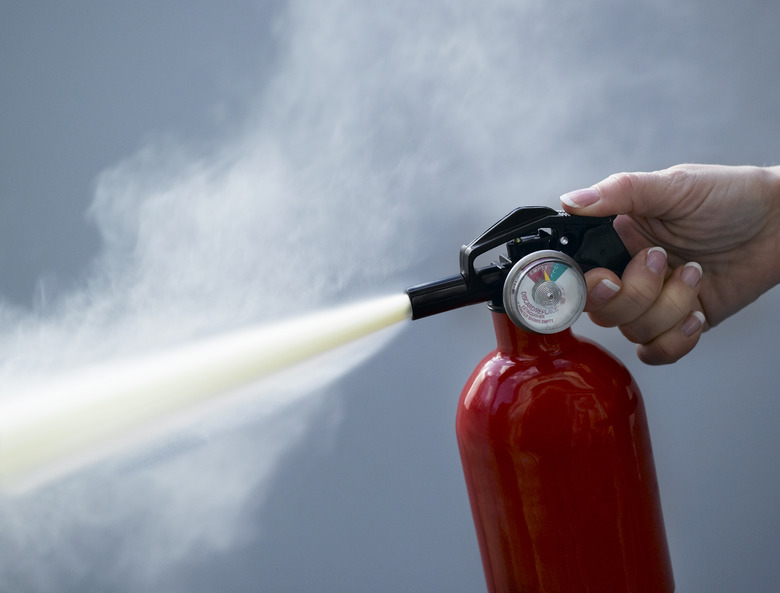Can You Reuse Fire Extinguishers?
It can happen quickly and spread rapidly. Fires happen most often in home kitchens, garages and around campfires or craft projects that use flammable adhesives or tools. Having a fire extinguisher at the ready can snuff out a hot mess that pops up unexpectedly before it turns into a tragedy. After the life-saving device is mounted to a wall, you should be prepared to use it. Once used, it will need to be recharged.
Tip
Unless it's a single-use model, you can reuse a fire extinguisher, but it needs to be recharged before you use it again.
Types of Fire Extinguishers
Types of Fire Extinguishers
It's good to know what type of fire extinguisher you need for your use, either for your home, garage, boat or camping. Fire extinguisher types include Class A, B, C and D. Each is designed to put out a specific type of fire. Class A fire extinguishers are meant for ordinary combustibles, which is wood, cloth, paper, rubber and plastics that are typically found around the home.
Class B involves flammable liquids, such as oil and grease fires from stovetop cooking, tars, oil-based paints and flammable gases that may be stored in a home. Class C fires are electrical in nature and can involve equipment, wire shortages and overheated appliances.
Class D extinguishers are used for flammable metals. There are many fire extinguisher classes available, both online and at area fire stations, schools, libraries or private club functions.
How to Recharge a Fire Extinguisher
How to Recharge a Fire Extinguisher
Most fire extinguishers can be used more than once, depending on the brand and type — unless you have a one-time-use fire extinguisher. In general, however, once the fire extinguisher has been used, even for a small amount of time, it should be recharged or refilled. Once the pin has been pulled and the trigger depressed, the canister can lose pressure, making the extinguisher useless in the case of a future emergency. Some experts recommend recharging, repinning and reusing a fire extinguisher just once, and then disposing of it according to local regulations.
For household fire extinguishers, they need to be inspected and possibly recharged every six to 12 years, whether or not they've ever been used. This can be done at a certified fire equipment dealer or a firehouse. Check the expiration date on your extinguisher, which is usually stamped right on the body; if it has passed, it's no longer useable and must be discarded. Obviously, when you have a fire emergency, you don't want to be relying on an out-of-date unit that may be less effective — or ineffective — in putting out your fire.
Facts About Fire Extinguishers
Facts About Fire Extinguishers
There are many small things to understand about using a fire extinguisher. A fire extinguisher will spray a dry chemical stream from 5 to 20 feet. They usually contain 10 to 20 pounds of the dry chemical. That amount can be used up between 10 and 25 seconds. Once you release the trigger, the spray will stop. One-time-use fire extinguishers are smaller and are typically used for emergencies that can occur quickly, such as around a campfire or kitchen stove.
Tip
Be sure to familiarize yourself with the location of the fire extinguishers in your home, shop or anywhere else you operate.
